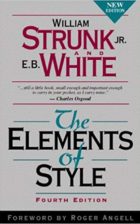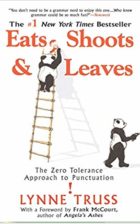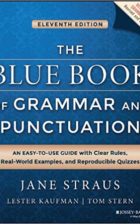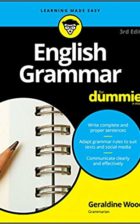Past Perfect Tense: Simple and Continuous
There are two types of past perfect tenses in English. One is the past perfect simple tense, and the other is the past perfect continuous tense (also known as past perfect progressive).
Let’s have a look at examples for each of these two tenses to understand how they are used and what sort of information they convey when we use them.
Past Perfect Simple
Formation: We form the past perfect simple tense with the auxiliary verb “had” + a past participle. Remember, for regular verbs, their past participle form will end in “-ed” (such as worked, laughed, and jumped), whereas the past participle form of irregular verbs will end in a variety of different forms (such as drunk, swum, written, made, and sung).
Examples
We use the past perfect tense when we want to convey a past situation in one of two particular ways:
1. To make it clear that a certain action was completed before another action took place in the past.
* I stood up to leave. I had waited long enough.
The action of waiting took place before the action of getting up to leave.
* My dog went to sleep. It had played in the garden all morning.
The action of playing in the garden took place before the action of going to sleep.
* I went to look at the window. The ball had broken the glass.
The action of the ball breaking the glass took place before the action of going to look at the window.
* I climbed out the pool. I had swum all day.
The action of swimming took place before the action of climbing out the pool.
2. To convey that an activity was completed before a certain point of time in the past.
* I had lived in Japan for ten years by the time I got married.
The period of living in Japan for ten years was completed before the action of getting married, which also took place in the past.
* I had gone back home to Paris earlier this year when the riots took place.
The action of going back home was completed before the riots took place.
* Had you traveled by bullet train before going to Japan?
The question of traveling by bullet train is framed to take place at an earlier time than the person was in Japan.
* In 2020 I had been a teacher for over a decade.
The act of being a teacher for over a decade was true by the time the year was 2020.
Past Perfect vs Present Perfect Simple
1. Past perfect tense is often used with phrases to indicate that a particular activity took a certain amount of time, such as “for five years,” “since 2004,” “all month,” and “always.”
* Kim had waited all day by the time she could board the airplane.
* My brother moved away from England. He had lived there for ten years.
* In 2018 Alex started to work in America. He had always wanted to live there.
These “time” expressions are also used with the present perfect. However, an important difference is that the present perfect refers to events or actions that began in the past and which are still ongoing, whereas the past perfect describes events or actions that began before a certain point of time (or before another action) in the past and only continued until that past point of time.
Present perfect:
* I have been in Japan for a decade.
I arrived in Japan a decade ago and I am still there.
Past perfect:
* When I started learning flower arrangement, I had been in Kyoto for a month.
I arrived in Kyoto a month before I started learning flower arrangement, and I may or may not still be there
2. If we use past perfect simple tense, this doesn’t necessarily mean that an activity continued up until a point of time in the past. The activity can end at any time before the point of time in the past to which we are referring.
* In 2010 Kevin worked in Tokyo. In the 1990s he had worked in Taiwan.
Kevin left his job in Taiwan at some point during the 1990s. In 2010 he worked in Tokyo, but we don’t know what he did during the time between these activities.
Past Perfect vs Past Simple
1. We use past simple tense for actions that happened some time ago. The past perfect, on the other hand, is used for actions that took place before another point of time in the past.
* Ben arrived at 5 o’clock. He had called Tom from the subway, and now he was outside Tom’s apartment.
In this example, the sequence of events is in a reversed order: in reality, Ben first called Tom from the subway and then he arrived at Tom’s apartment. In order to convey this information correctly, we use the past perfect to make the order of these events clear.
2. If the order of the sentences is the same as the order of the events, we can simply use the past tense to describe the situation.
* Ben called Tom on his way to Tom’s apartment. He arrived at 5 o’clock outside Tom’s apartment.
The difference here is important. Depending on the context, these two tenses can have totally different meanings.
* John went to the clinic. They told him to pay in cash, but he only had his credit card so he couldn’t pay for his medication.
* John went to the clinic. They had told him to pay in cash, so he paid and received his medication.
In the first case, John didn’t know that he had to pay in cash: the clinic told him that after his arrival. In the second case, John was informed before his arrival that he had to pay in cash, so he was already prepared for the situation.
Past Perfect in Time Clauses
In time clauses, we can use either the past tense or the past perfect tense after phrases like “when.” We use past tense to convey that the first action led to the second action, and that the second action followed the first one quite closely.
* When the movie ended, we turned off the television.
In comparison, we use the past perfect when we want to convey that the first action was completed before the second one started, and that there is no relation between them.
* Once she had put the kids to bed, she had a cup of tea.
* When he had finished his homework, he phoned his friend.
We use the past perfect tense in similar way with the following phrases: “as soon as,” “before,” “until,” and “by the time.”
* Jane woke up as soon as she had heard her alarm clock ring.
* They didn’t stop until they had reached the ocean.
* Heather had finished her lunch by the time I arrived.
Past Perfect Continuous/Progressive
Formation: The past perfect continuous (or progressive) tense is formed by “had been” + a present participle (that is, the form of a verb ending in “-ing,” such as “working,” “running,” and “learning”)
Examples
We use the past perfect continuous tense to describe activities that began before a certain point of time in the past and which were still continuing at that point of time.
* Last year, Kate had been studying medicine for four years already.
Kate first started studying five years ago, and at the point of the previous year she had been studying for four years.
Past Perfect Continuous vs Present Perfect Continuous
The past perfect and present perfect continuous tenses are actually quite similar. The main difference is that in the past perfect, we refer to a point of time in the past, whereas in the present perfect we refer to the present.
Present perfect:
* Blake has been practicing piano since this morning.
Blake began practicing the piano this morning and she hasn’t stopped yet.
Past perfect:
* By 3 p.m. I had been rehearsing for five hours already.
I began rehearsing at 10 a.m., and at 3 p.m. I was still rehearsing.
Past Perfect Simple vs Past Perfect Continuous
For an action or activity that can continue for a long time, we can use both the simple and continuous tenses. There is little difference in meaning, but the continuous (or progressive) form is more common in English.
* Jess was tired. She had studied all day.
* Harry was tired. He had been studying all day.
However, remember that in other cases, these two tenses can have completely different meanings:
* Before midnight, Lucy had written her report.
Lucy finished her report before midnight.
* Before midnight, Sam had been writing his report.
Sam did not finish his report before midnight; he was still writing it.
If we refer to more than one action, or to actions that were repeated, we use the past perfect simple tense.
* Before the bell rang, I had written two essays on gender identity.
Two individual activities (two essays) were completed before the bell rang.
* My hand was cramping. I had been writing essays since the exam started.
In this case, there is only one uninterrupted activity (writing essays), and it hasn’t been completed yet).
* * *
For more help with your English grammar and writing, have a look at our resource page for the best guides and books available!
Stay in Touch!
Do you want to learn how to read, write, and speak English with confidence? Are there any grammar rules that you find hard or confusing? Drop us a comment to let us know and we’ll help you in your journey to learn English!









